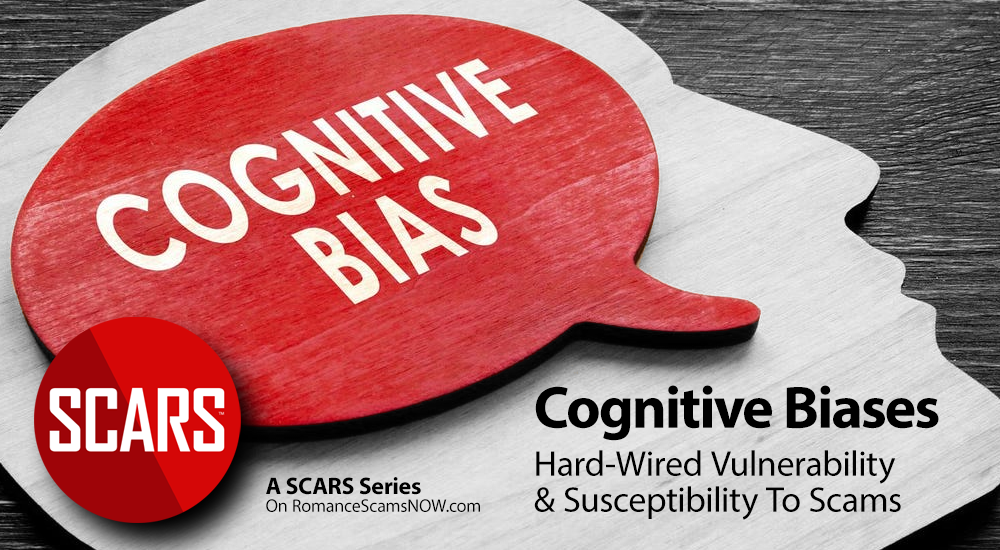Does Regulation E Apply To All Scams In The USA?
A New Opportunity To Recover Your Money
A Guest Editorial By PJ Rohall, About-Fraud.com, SCARS Partner
Presented by SCARS
What Is Regulation E?
Introduction
Regulation E applies to any electronic fund transfer in the United States that authorizes a financial institution to debit or credit money from a consumer’s account.
This regulation determines the framework and steps for the dispute process. The Consumer Financial Protection Bureau (CFPB) issues Reg E following the Electronic Fund Transfer Act.
What Transactions Will Fall Under Regulation E?
The following types of transactions are electronic fund transfers and fall under Reg E, according to the CFPB:
- Point-of-sale transfers
- ATM transfers
- Withdrawal of funds
- Debit card transactions
All debits and withdrawals aren’t considered electronic fund transfers. The following transactions aren’t covered under Reg E:
- Checks
- Wire transfers
Does Reg E Cover Scams?
A Guest Editorial by PJ Rohall – Fraud Subject Matter Expert (SME) at Featurespace | Co-Founder at About-Fraud | Mental Health Advocate | SCARS Partner
A lot has been said about the Consumer Financial Protection Bureau’s (CFPB) commentary on how Reg E is applied to consumer scams. Here are some quick thoughts on what I find most interesting.
Authorized Push Payment Fraud (APP) still not covered by Reg E
APP fraud happens in all geographies but is talked about most frequently in the U.K. This is because they have over a decade of experience in real-time payments and more recently rolled out the Contingency Reimbursement Model (CRM) which has brought APP fraud front and center. The CRM is a whole article in itself, so let’s set that to the side and focus on APP fraud.
APP fraud is when a consumer is manipulated, through social engineering, into making a payment into an account that a fraudster controls. It comes in a variety of forms – romance scams, investment scams, invoice scams, imposter scams, etc. but it has one common element: the consumer logs in and executes the payment.
The CFPB commentary refers to consumers who are scammed into divulging sensitive information that enables a fraudster to take over their account, and the fraudster executes an unauthorized payment. That is different than APP fraud.
It seems clear to me that the CFPB is stating that Reg E can be applied to scams that lead to account takeovers, not scams that involve genuine customers executing fraudulent payments.
If this scam, why not that scam?
Ok, so why does Reg E cover one type of scam but not another? An interesting thread to tug on some more.
When a consumer is manipulated into logging in and making a payment, they are a victim of the same psychological manipulation as when they fork over their log-in information/OTP to allow a fraudster to do it. Does the act of being the one pushing the buttons mean they are in anymore control?
Some will argue, yes. They’ll say, if you’re actually the one logging in and sending the payment you should at some point be aware the payment you are sending may be fraudulent.
But that perspective ignores the fundamental purpose of social engineering. People are not behaving in a manner they normally would. People’s minds and emotions are preyed on systematically and strategically. And that can be applied to instances of logging in and executing the payment.
So, why is the scam that leads to an account takeover covered by Reg E, but the APP scam is not? Isn’t the consumer vulnerable to social engineering in both cases?
Negligence
Let me be clear, I am not arguing for liability one way or the other, I am simply exploring consistency. And on that point… let’s talk negligence. In the CFPB’s commentary, they stated that banks can not consider consumer negligence when determining liability under Reg E. And remember this is the scam where a consumer is being manipulated to give up their information and having their account taken over.
I clearly understand the sophistication of scams, but does that mean a consumer should have no responsibility when taking care of their sensitive information? I don’t think it’s helpful to not allow negligence to be considered at all. When you do this, you remove all responsibility from the consumer and set up an environment where folks are more likely to be careless.
Summing it all up
Determining liability in scams will always be tough, which is why I am not arguing one way or the other. However, I do think we should find more consistency in the interpretation of scams. My personal opinion is a scam is a scam, no matter who executes the final payment. Now, where do you draw the lines of responsibility and liability, that’s the million-dollar question. And no matter how you answer you should agree the best option is to prevent it before it happens. Layering education, technology and awareness to proactively stop as many scams as possible will always be the course we can all agree on!
A New Reimbursement For U.S. Scam Victims May Be An Option
The implication of Regulation E is clear and for some victims, it may be a way to recover money stolen by scammers.
To qualify you MUST answer these questions:
- Are you a U.S. resident?
- Did you give access or allow your scammer to have access to your bank account?
- Did the scammer withdraw any money from your account directly – without your direct participation?
IF YOU ANSWER YES TO ALL THREE YOU MAY QUALIFY FOR THIS.
However – there is a ONE-YEAR STATUTE OF LIMITATIONS – meaning this will only work for scammer-enacted withdrawals or transfers within the last YEAR!
The Reg E Dispute Submission Process May Differ From Bank To Bank
Some banks may require you to submit your dispute in writing, even though you already gave it to a representative over the phone.
Some banks, such as First Interstate Bank, have an online form. The form, which is used for debit card and ATM card disputes, asks for information such as:
- the amount of the transaction you’re disputing
- the type of merchandise or service
- the date the transaction was made
- the date the transaction posted to your account
- whether you had lost your debit card
However, the U.S. Federal Reserve also has a dispute reporting process that we recommend that you do simultaneously with submitting it to the bank.
To file a dispute claim through the United States Federal Reserve visit here: What do I do once I’m ready to file a complaint? | Federal Reserve Consumer Help
Follow the instructions exactly as written.
Reference
Important Links:
- CFPB releases unauthorized EFTs and error resolution FAQs | Buckley LLP Infobytes Blog (buckleyfirm.com)
- 12 CFR Part 1005 – Electronic Fund Transfers (Regulation E) | Consumer Financial Protection Bureau (consumerfinance.gov)
- Electronic Fund Transfers FAQs | Consumer Financial Protection Bureau (consumerfinance.gov)
- Final Rules | Consumer Financial Protection Bureau (consumerfinance.gov)
-/ 30 /-
What do you think about this?
Please share your thoughts in a comment below!
Article Rating
Table of Contents
- A New Opportunity To Recover Your Money
- A Guest Editorial By PJ Rohall, About-Fraud.com, SCARS Partner
- Introduction
- What Transactions Will Fall Under Regulation E?
- Does Reg E Cover Scams?
- A New Reimbursement For U.S. Scam Victims May Be An Option
- The Reg E Dispute Submission Process May Differ From Bank To Bank
- Important Links:
RATE THIS ARTICLE?
LEAVE A COMMENT?
Recent Comments
On Other Articles
- Nikolaus on Dating Scammers Paradise: Ivory Coast: “The Ivory Coast romance scam is still going on. It seems that local authorities don’t handle the issue effectively!” Dec 10, 02:17
- on The SCARS Institute Top 50 Celebrity Impersonation Scams – 2025: “Thank you – we will.” Dec 7, 11:41
- on The SCARS Institute Top 50 Celebrity Impersonation Scams – 2025: “You should add Sean Bean to your list of Celebrities. This one is very good, and persistent. He will be…” Dec 2, 12:07
- on How You Think & Talk About Your Scam Affects Your Recovery: “I have hung on to the scams for far too long. With the intervention of an all-merciful God, I have…” Nov 6, 22:13
- on Disengaging From A Fake Scam Relationship: “Taci, you may want to join our new support community at www.SCARScommunity.org” Nov 6, 03:01
- on Disengaging From A Fake Scam Relationship: “This particular article helped me discover the many things I did wrong the first time I was scammed. I should…” Nov 5, 22:49
- on About the SCARS RomanceScamsNOW.com Website – 24 Years Published: “It was unavailable for a few days, but it is available again. If he would be interested, he is welcome…” Nov 5, 00:59
- on About the SCARS RomanceScamsNOW.com Website – 24 Years Published: “My husband has been scammed and your classes have been helping him but now he can’t seem to access them.…” Oct 26, 14:57
- on Talia Shepard – Impersonation Victim – Stolen Photos – 2024: “Hi, I’m Patrick from Belgium and I found this site by chance, so I just got to know it, and…” Oct 17, 23:46
- on Talia Shepard – Impersonation Victim – Stolen Photos – 2024: “Hallo ik ben Patrick uit Belgie en het is in verband over PayPal. Ik heb het dit jaar spijtig genoeg…” Oct 17, 23:08
ARTICLE META
Important Information for New Scam Victims
- Please visit www.ScamVictimsSupport.org – a SCARS Website for New Scam Victims & Sextortion Victims
- Enroll in FREE SCARS Scam Survivor’s School now at www.SCARSeducation.org
- Please visit www.ScamPsychology.org – to more fully understand the psychological concepts involved in scams and scam victim recovery
If you are looking for local trauma counselors please visit counseling.AgainstScams.org or join SCARS for our counseling/therapy benefit: membership.AgainstScams.org
If you need to speak with someone now, you can dial 988 or find phone numbers for crisis hotlines all around the world here: www.opencounseling.com/suicide-hotlines
A Note About Labeling!
We often use the term ‘scam victim’ in our articles, but this is a convenience to help those searching for information in search engines like Google. It is just a convenience and has no deeper meaning. If you have come through such an experience, YOU are a Survivor! It was not your fault. You are not alone! Axios!
A Question of Trust
At the SCARS Institute, we invite you to do your own research on the topics we speak about and publish, Our team investigates the subject being discussed, especially when it comes to understanding the scam victims-survivors experience. You can do Google searches but in many cases, you will have to wade through scientific papers and studies. However, remember that biases and perspectives matter and influence the outcome. Regardless, we encourage you to explore these topics as thoroughly as you can for your own awareness.
Statement About Victim Blaming
Some of our articles discuss various aspects of victims. This is both about better understanding victims (the science of victimology) and their behaviors and psychology. This helps us to educate victims/survivors about why these crimes happened and to not blame themselves, better develop recovery programs, and to help victims avoid scams in the future. At times this may sound like blaming the victim, but it does not blame scam victims, we are simply explaining the hows and whys of the experience victims have.
These articles, about the Psychology of Scams or Victim Psychology – meaning that all humans have psychological or cognitive characteristics in common that can either be exploited or work against us – help us all to understand the unique challenges victims face before, during, and after scams, fraud, or cybercrimes. These sometimes talk about some of the vulnerabilities the scammers exploit. Victims rarely have control of them or are even aware of them, until something like a scam happens and then they can learn how their mind works and how to overcome these mechanisms.
Articles like these help victims and others understand these processes and how to help prevent them from being exploited again or to help them recover more easily by understanding their post-scam behaviors. Learn more about the Psychology of Scams at www.ScamPsychology.org
Psychology Disclaimer:
All articles about psychology and the human brain on this website are for information & education only
The information provided in this article is intended for educational and self-help purposes only and should not be construed as a substitute for professional therapy or counseling.
While any self-help techniques outlined herein may be beneficial for scam victims seeking to recover from their experience and move towards recovery, it is important to consult with a qualified mental health professional before initiating any course of action. Each individual’s experience and needs are unique, and what works for one person may not be suitable for another.
Additionally, any approach may not be appropriate for individuals with certain pre-existing mental health conditions or trauma histories. It is advisable to seek guidance from a licensed therapist or counselor who can provide personalized support, guidance, and treatment tailored to your specific needs.
If you are experiencing significant distress or emotional difficulties related to a scam or other traumatic event, please consult your doctor or mental health provider for appropriate care and support.
Also read our SCARS Institute Statement about Professional Care for Scam Victims – click here to go to our ScamsNOW.com website.












![Money Recovery & Investigative Scams Target Scam Victims [Updated] Money Recovery and Investigative Scams Target Scam Victims Money Recovery Scams & Investigative Scams Target Scam Victims - on RomanceScamsNOW.com](https://romancescamsnow.com/wp-content/uploads/2016/02/Money-Recovery-and-Investigative-Scams-Target-Scam-Victims.png)




Thank you for your comment. You may receive an email to follow up. We never share your data with marketers.